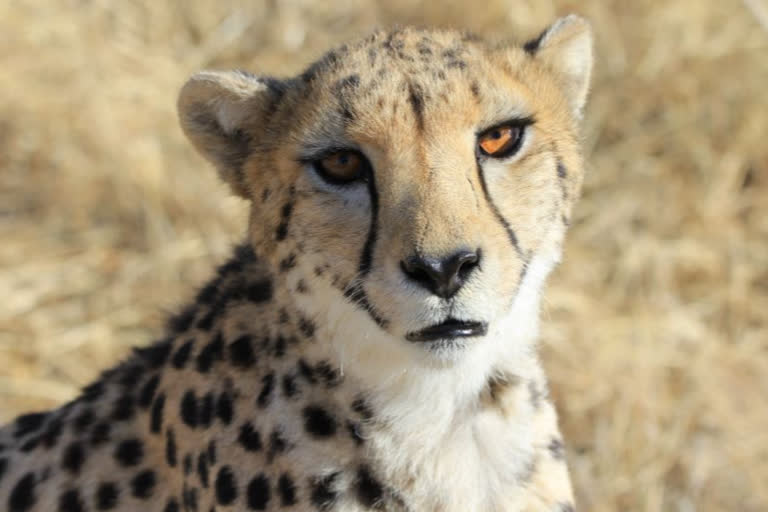New Delhi: Did you know that a cheetah can clock a distance of 100 metres in just three seconds, faster than most cars, but cannot maintain its top speed for more than half a minute? To put things in perspective, the world's fastest man and Olympic champion Usain Bolt's top speed is 44.72 kmph. As Prime Minister Narendra Modi is set to release eight cheetahs brought from Namibia in Madhya Pradesh's Kuno National Park, here are some facts about the animal.
Delhi-based wildlife journalist and writer Kabir Sanjay says the animal is known for its stunning speed and not for stamina. "The cheetah is a sprinter and not a marathon runner. Since it cannot sustain speed chases for long, it must catch the prey in 30 seconds or less. If the cheetah fails to make a kill quickly, it gives up. Hence, it has a dismal hunting success rate of 40 to 50 percent," he says.
Even the cheetah gets its prey, it usually becomes exhausted after chasing and has to rest for quite a while. This is the reason why other carnivores, like leopards, hyenas and wild dogs, often rob its prey. Even vultures can chase the cheetah away. It does not have the same power and strength as other big cats, Sanjay says in his book 'Cheetah: Bharatiya Janglon Ka Ghum Shehzada'.
The senior journalist says the animal's body is designed for speed: large lungs and nostrils to take in a lot of oxygen and an oversized heart to quickly pump a lot of blood containing oxygen around its body. Cheetahs have a slim, flexible body with a softer spine that can bunch and spread like a coil; a small head which reduces air resistance, and long, thin legs which help them take bigger strides.
Cheetahs' foot pads are hard and less rounded than the other cats. The pads function like tire treads providing them with increased traction in fast, sharp turns, according to the Namibia-headquartered non-profit Cheetah Conservation Fund (CCF), which is coordinating with the Indian government to reintroduce the animal in the country.
